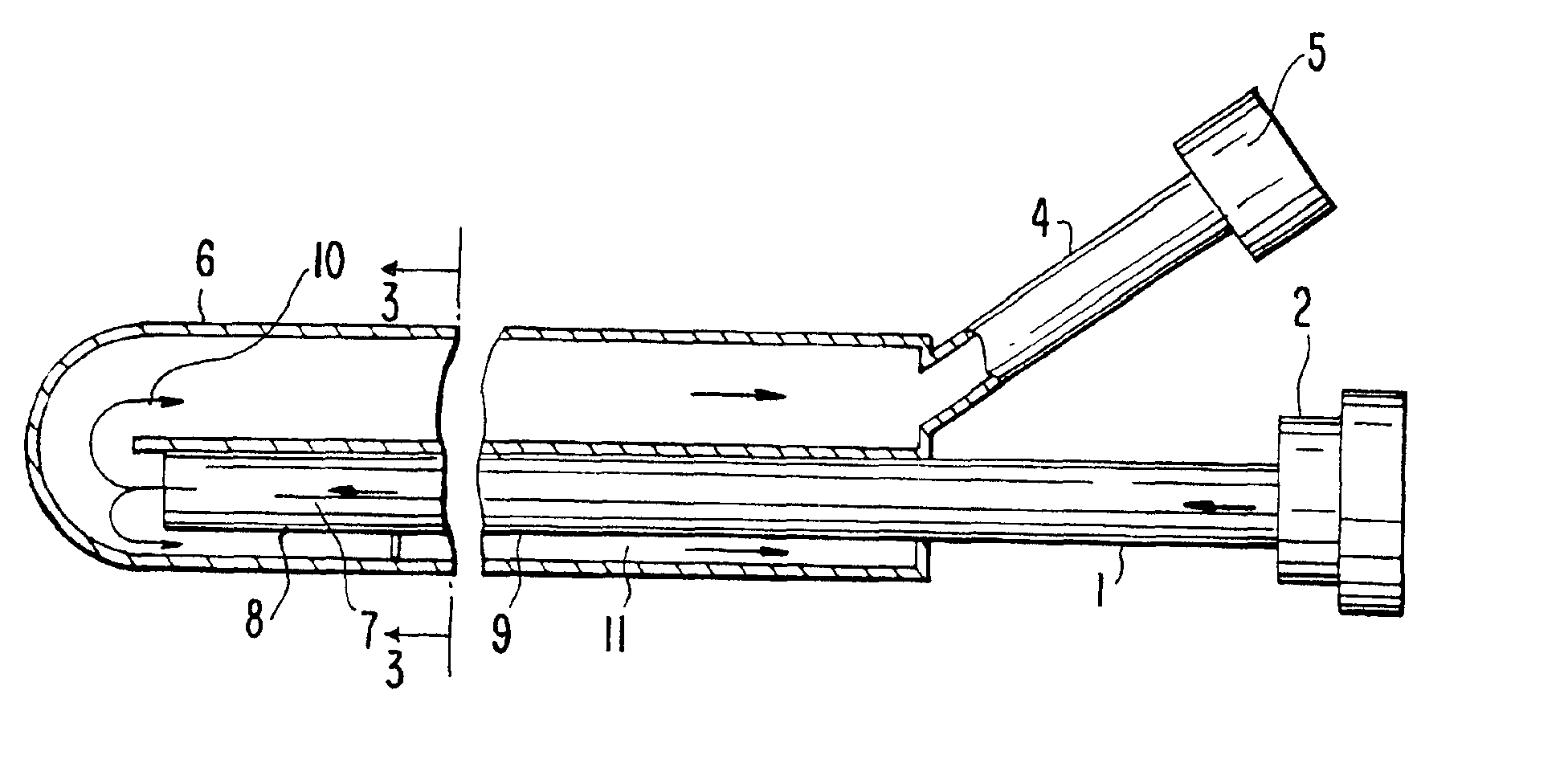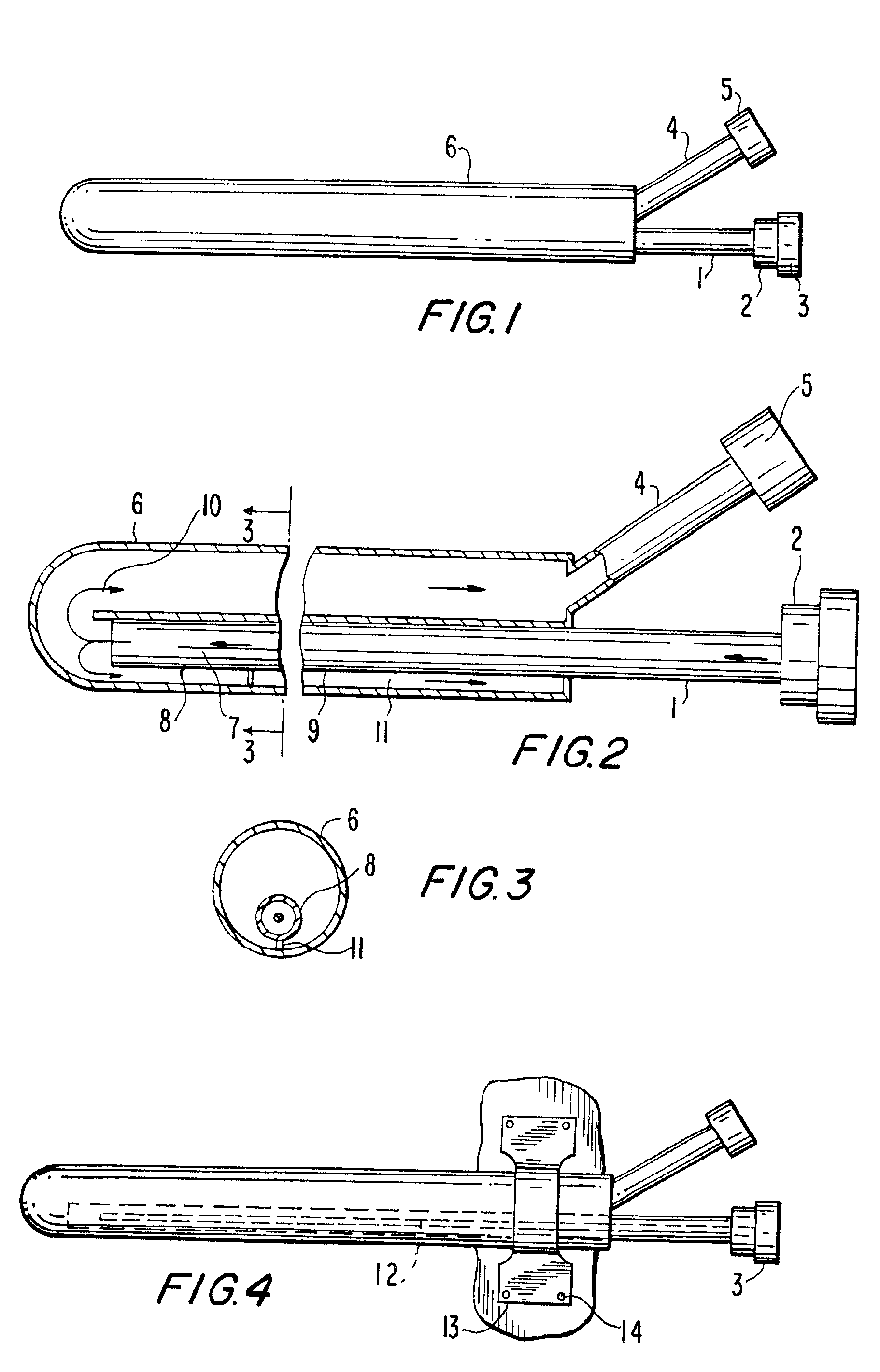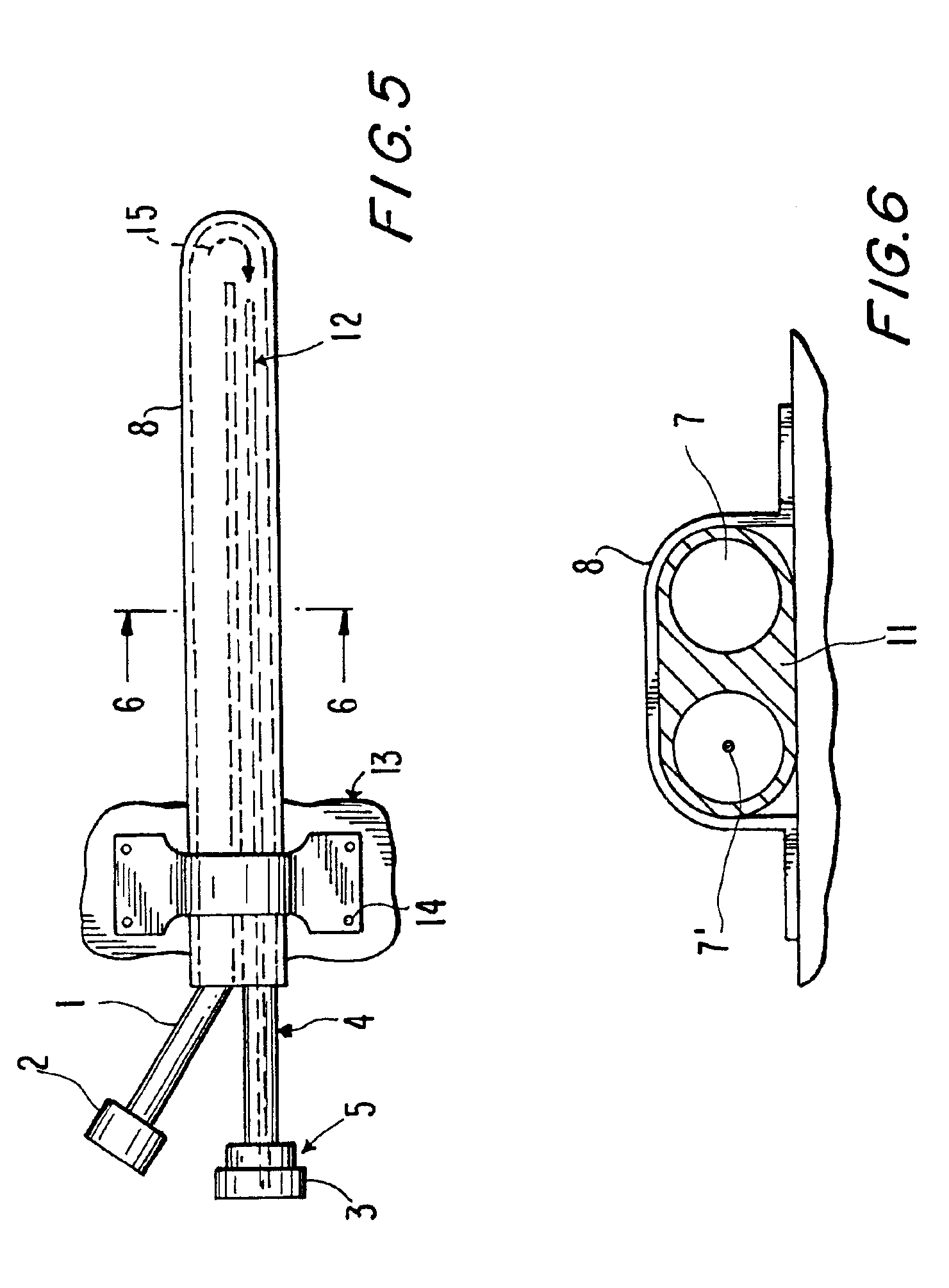Method and device for intravascular plasma fluid removal
a plasma fluid and intravascular technology, applied in the field of methods for the removal of plasma fluid, can solve the problems of not specifically addressing the removal of fluid/water, less than optimal for the desired purpose, and high dose diuretics or cardiac inotropes that fail to adequately respond to high doses,
- Summary
- Abstract
- Description
- Claims
- Application Information
AI Technical Summary
Benefits of technology
Problems solved by technology
Method used
Image
Examples
Embodiment Construction
The primary therapeutic goal of the method of the invention performed using the device is removal of fluid volume, rather than the small amounts of solutes or toxins that are cleared by the convection of bulk liquid. The osmotic gradient or pressure required to induce the necessary rate of fluid removal will depend on the permeability of the device's wall (i.e. ultrafiltration coefficient) and its surface area. Increasing the porosity of the semipermeable barrier not only increases fluid loss, but also reduces its effective sieving and thereby allows convective losses of larger solutes or toxins. Intra-device collapse and flow irregularities are avoided in the present invention by using osmotic gradients, which distend the internal lumens. This is an important conceptual difference between the effects of prior art pump-driven hydraulic pressure gradients and osmotic gradients. Although the ultrafiltration coefficient of the semipermeable membrane suggests that there would be equal f...
PUM
| Property | Measurement | Unit |
|---|---|---|
| molecular weight | aaaaa | aaaaa |
| surface areas | aaaaa | aaaaa |
| pressure | aaaaa | aaaaa |
Abstract
Description
Claims
Application Information
 Login to View More
Login to View More - R&D
- Intellectual Property
- Life Sciences
- Materials
- Tech Scout
- Unparalleled Data Quality
- Higher Quality Content
- 60% Fewer Hallucinations
Browse by: Latest US Patents, China's latest patents, Technical Efficacy Thesaurus, Application Domain, Technology Topic, Popular Technical Reports.
© 2025 PatSnap. All rights reserved.Legal|Privacy policy|Modern Slavery Act Transparency Statement|Sitemap|About US| Contact US: help@patsnap.com



